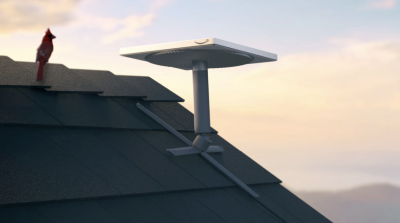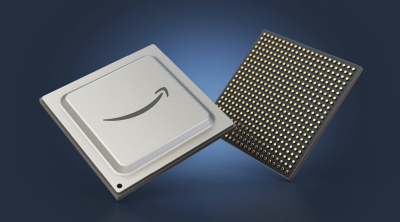Amazon provided a first look at three new outdoor antenna models it has created for its Project Kuiper low-earth orbit (LEO) satellite broadband service. And the company said it plans to begin offering the service in 2024.
The company has been working on its antennas since 2020.
The new standard antenna, or customer terminal, will deliver speeds up to 400 Mbps. It measures less than 11 inches square and 1 inch thick and weighs less than five pounds without its mounting bracket. Amazon expects to produce these terminals for less than $400 each.

In addition to the standard customer terminal, Amazon will also offer an ultra-compact design as a low-cost option for residential customers around the world. This antenna weighs just 1 pound and offers speeds up to 100 Mbps. In addition to residential broadband, the small terminal will also be suitable for government and enterprise customers pursuing applications like ground mobility and internet of things (IoT).
And Amazon created a large-size terminal, measuring 19 inches x 30 inches for customers that require up to 1 Gbps.
The company is scaling its infrastructure in anticipation of building tens of millions of these new customer terminals for its future LEO broadband service.
Amazon-designed chips
Project Kuiper customer terminals are powered by an Amazon-designed baseband chip, developed under the code name “Prometheus.”

Prometheus combines the processing power of a 5G modem chip found in modern smartphones, the capability of a cellular base station to handle traffic from thousands of customers at once, and the ability of a microwave backhaul antenna to support point-to-point connections — all packed into a single custom chip.
Prometheus is also used in Project Kuiper’s satellites and ground gateway antennas, allowing the system to process up to 1 Tbps of traffic on board each satellite.
Launching its constellation
Project Kuiper is preparing to deploy its first two prototype satellites on the first flight of United Launch Alliance’s Vulcan Centaur rocket. The upcoming mission will help Project Kuiper engineers gain real-world data on how the systems perform in space and let them test the entire end-to-end communications network.
The Federal Communications Commission (FCC) recently granted Kuiper permission to deploy its LEO constellation of 3,236 satellites. The grant came after the FCC approved Kuiper’s updated orbital debris mitigation plan.
In terms of offering its commercial broadband service, the Kuiper team recently began development of a dedicated satellite production facility in Kirkland, Washington, and it expects to begin mass-producing satellites by the end of 2023.
Then, Kuiper expects to launch the first production satellites in the first half of 2024 and give its earliest customers access to the service beginning later that year.
Starlink
Amazon will be competing against SpaceX’s Starlink satellite broadband service that is already operational. Amazon has not said how much its customer terminals or monthly broadband service will cost.
Starlink’s standard terminals cost $599. And it charges $120 per month for residential users in congested network areas and $90 a month for people in areas where there is not congestion among Starlink users.